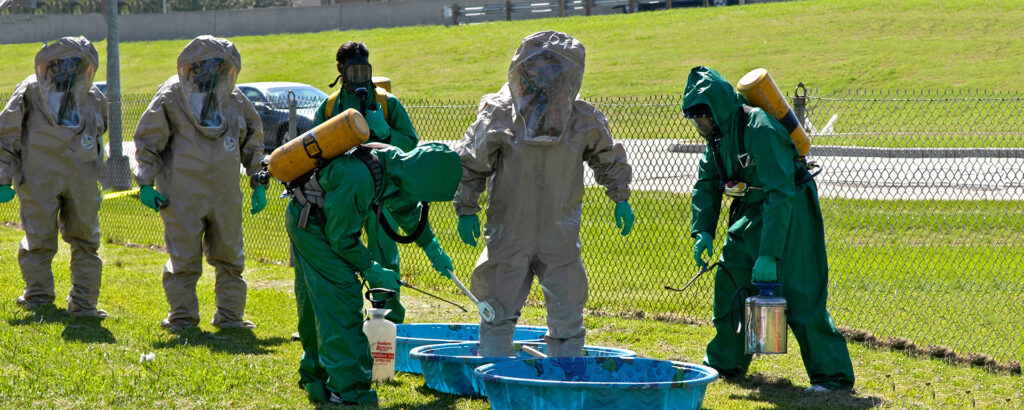
Decontamination is needed within minutes of exposure to minimize health consequences. Do not leave the safety of a shelter to go outdoors to help others until authorities announce it is safe to do so.
A person affected by a chemical agent requires immediate medical attention from a professional. If medical help is not immediately available, decontaminate yourself and assist in decontaminating others.
Decontamination guidelines are as follows:
- Use extreme caution when helping others who have been exposed to chemical agents.
- Remove all clothing and other items in contact with the body. Contaminated clothing normally removed over the head should be cut off to avoid contact with the eyes, nose, and mouth. Put contaminated clothing and items into a plastic bag and seal it. Decontaminate hands using soap and water. Remove eyeglasses or contact lenses. Put glasses in a pan of household bleach to decontaminate them, and then rinse and dry.
- Flush eyes with water.
- Gently wash face and hair with soap and water before thoroughly rinsing with water.
- Decontaminate other body areas likely to have been contaminated. Blot (do not swab or scrape) with a cloth soaked in soapy water and rinse with clear water.
- Change into uncontaminated clothes. Clothing stored in drawers or closets is likely to be uncontaminated.
- Proceed to a medical facility for screening and professional treatment.
All information above is from the FEMA website.
For more information and resources on Terrorism Preparedness, please visit the web sites below.
US Department of Homeland Security – FEMA
http://www.fema.gov/
 US Department of Homeland Security
US Department of Homeland Security
http://www.dhs.gov/
Homeland Security National Terrorism Advisory System
http://www.dhs.gov/national-terrorism-advisory-system
CDC – Center For Disease Control and Prevention
http://www.cdc.gov/
CDC – Bioterrorism
http://emergency.cdc.gov/bioterrorism/
American Red Cross
http://www.redcross.org/
Ready Gov
http://www.ready.gov/